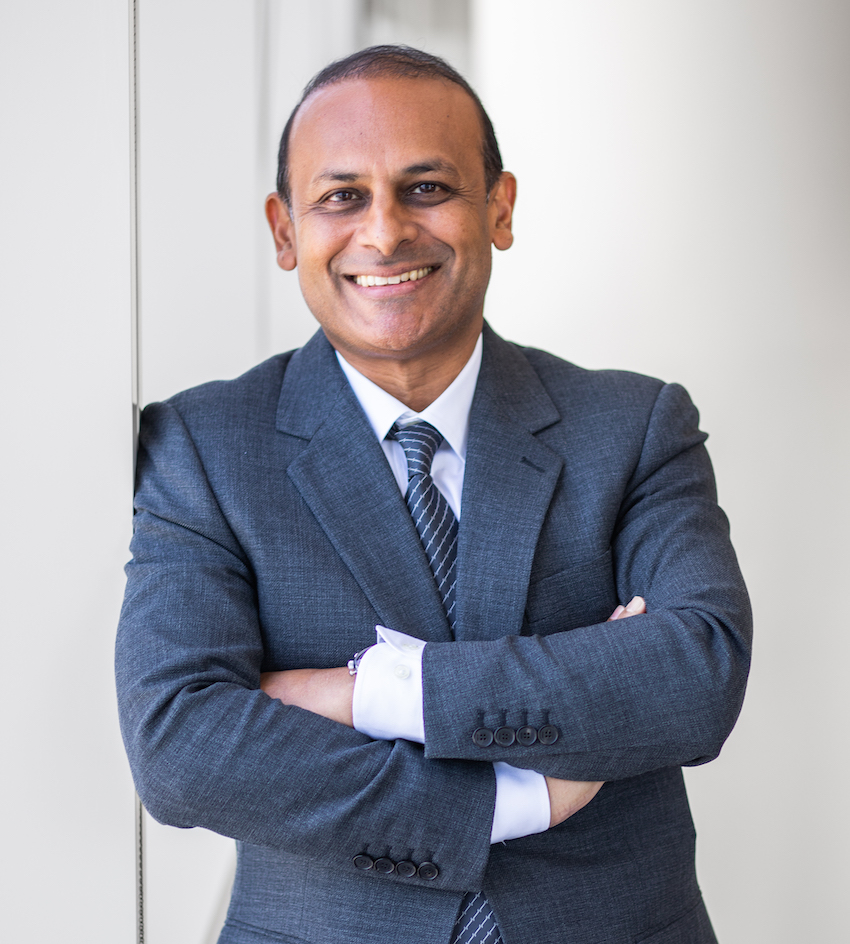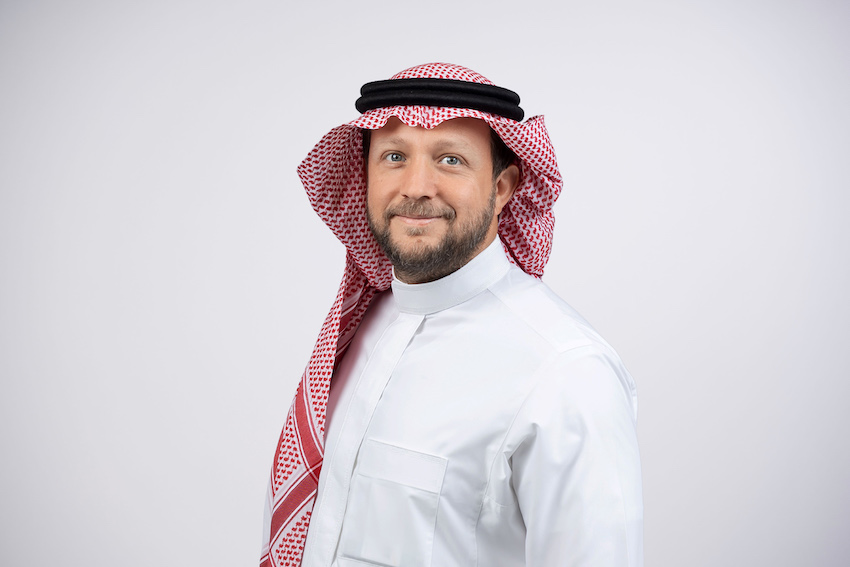RIYADH: A special economic zone being rolled out in Riyadh is turning Saudi Arabia into a cloud computing hub that will boost jobs and attract foreign investment, experts have told Arab News.
The Cloud Computing Special Economic Zone was launched in April 2023, and is located in the Innovation Tower at King Abdulaziz City for Science and Technology in Riyadh.
It provides access to the latest technologies, world-class infrastructure, and a pool of skilled talent, for companies providing cloud computing services.
The zone is set to account for 30 percent of total information communications technology spend in the Kingdom by 2030 and offers investors the opportunity to take advantage of a growing market for emerging and disruptive digital technologies.
Backed by the Kingdom’s Cloud First Policy, the CCSEZ will gradually be expanded to cover the technologies that will shape the future. With an initial focus on cloud computing, a vital hub for innovation and collaboration is being created to drive the next wave of tech advancement.
Experts have told Arab News that some 15 months on from its launch, the zone is providing investors with significant access to untapped prospects.
According to statistics released by market research firm Mordor Intelligence, the Saudi cloud computing market reached approximately $4.8 billion in 2023, with expectations to soar to $8.8 billion by 2029. This reflects a forecasted compound annual growth rate of 16.85 percent from 2024 to 2029.
The market is anticipated to grow due to rising demands for lower capital expenditure, increased acceptance of digital business strategies, a greater need for the Internet of Things, and quicker and simpler cloud service implementation.
That said, the CCSEZ offers a distinctive and adaptable model that enables providers to deliver a wide range of cloud computing services within the zone. This includes the flexibility to construct and operate data centers across different regions of the Kingdom – with 400 already online in Saudi Arabia.
Sectors benefiting from the most from the CCSEZ
Aamer Mushtaq, regional solutions engineering manager at US-based cloud computing company Snowflake Aamer Mushtaq told Arab News that the CCSEZ will be a “game-changer for all sectors” but he highlighted three in particular – starting with financial and banking services.
“The secure and compliant cloud environment will be a boom for startups especially in the fintech domain and established institutions alike. Local cloud native solutions will enable innovative mobile payment solutions to enhance consumer experience, improve financial security and prevent fraudulent activity through cloud based analytics,” Mushtaq said.
The expert flagged up government services as another sector to benefit, particularly in the areas of efficiency, transparency, and service delivery.
“Under the CCSEZ regulation and compliance, government departments will be able to host data securely in the cloud, facilitating digital transformation initiatives such as e-government services, and supporting smart city developments across Saudi Arabia,” he said.
The third sector that Mushtaq shed light on is health care, saying: “Cloud computing in health care can help revolutionize telemedicine and remote patient monitoring by facilitating remote consultations with specialists, improving access to health care in remote areas and reducing wait times.”
He added that medical research and innovation will be accelerated by enabling researchers to share data and findings efficiently.
Rajat Chowdhary, technology consultant partner at PwC Middle East, also affirmed that health care will benefit from the CCSEZ, but flagged other areas also set to gain.
“The education sector will benefit from e-learning platforms, online resources, and collaborative tools, making learning more accessible,” Chowdhary told Arab News.
“Furthermore, the finance sector will see improved data security, faster transaction processing, and better decision-making through big data and analytics. Government agencies can use cloud services to improve e-government services and achieve greater efficiency,” the PwC partner added.
Additionally, Chowdhary shed light on smart mobility and how it is set to utilize the advantages offered by the CCSEZ.
“Smart mobility will benefit from the collection and analysis of data from connected vehicles, traffic management systems, and public transportation networks, leading to improved traffic flow, real-time route optimization, and predictive maintenance,” the partner explained.
Chowdhary said that as these sectors adopt cloud computing, there will be a significant transformation in their operations driven by enhanced efficiency and data-driven decision-making.
“The CCEZ will provide the necessary infrastructure, support, and regulatory framework to facilitate this transformation, positioning Saudi Arabia as a leading technology hub in the region,” he added.
CCSEZ impact on ICT sector growth and development
According to business management consultant Kearney, three years ago the Kingdom set itself the ambitious target to have 1,300 megawatts of data center capacity by 2030.
Lukas de Sonnaville, partner at digital and analytics practice Kearney Middle East and Africa, believes the roll out of the zone – together with Amazon Web Services investing more than $5.3 billion in developing data centers in Saudi Arabia – means it is merely a “matter of time” before that “ambitious” goal will be reached.
“This transformation will help the Kingdom become a regional hub for advanced computing technologies, aligning with Saudi Vision 2030’s goal to expand and strengthen technology and innovation infrastructure,” de Sonnaville said.
*CCSEZ role in enhancing cloud offering and boosting cloud utilization locally*
The objective of the CCSEZ in Saudi Arabia is to expedite the adoption of cloud technology within the region.
This is achieved by establishing an environment that is attractive to investors, with simplified regulations and enticing incentives designed to draw renowned cloud service providers to the Kingdom.
“Through increased diversification of local cloud services with reduced latency and improved security and compliance, Saudi businesses will accelerate their digital transformation journeys and drive sustainable growth in the digital economy,” Mushtaq explained.
De Sonnaville echoed this, saying: “By providing a Safe Harbor regulatory regime, the CCSEZ offers significant regulatory incentives to tech companies, fostering a competitive environment that drives innovation and technological advancements within and beyond the tech sector.”
CCSEZ benefits to businesses and organizations within Saudi Arabia
The economic benefits of the CCEZ for businesses and organizations in Saudi Arabia are substantial, with the robust cloud infrastructure attractive to foreign investments and local tech start-ups.
“Businesses will gain agility and flexibility, allowing them to quickly adapt to market changes. Enhanced customer experiences will result from faster and more reliable applications, leading to higher customer satisfaction. Advanced data analytics capabilities will enable personalized customer experiences,” PwC’s Chowdhary said.
“Finally, the CCEZ will support small and medium-sized enterprises by leveling the playing field. SMEs will have access to advanced cloud services similar to larger corporations, enabling effective competition. Cloud services will provide SMEs with the tools to innovate, scale, and expand their market reach,” he added.
The CCSEZ provides an array of incentives, such as favorable tax treatments and regulatory assistance, establishing an attractive investment landscape for both domestic and global cloud computing firms.
“These incentives are designed to stimulate substantial investment in the sector. In summary: services will be offered at lower cost as incentives are provided – e.g. very low electricity cost at $0.05 per kWh only – allowing a competitive, local KSA cloud market,” Sonnaville said.
The Kearney partner went on to underline that this flexibility is expected to attract significant FDI, thereby enhancing the global competitiveness of Saudi Arabia’s information and communications technology sector in the process as well as promoting sustained economic growth.
CCSEZ and job creation
The CCSEZ will have a significant impact on job generation by providing unique employment prospects in cutting-edge computing technologies and associated fields.
“The reason why KSA is doubling down on these cloud incentives, is not only to capture the cloud market and related GDP and employment, but that this is the flywheel to localization of many more tech companies, requiring significant (cloud) computing power, such as AI companies,” Sonnaville said.
Undoubtedly, the CCSEZ embraces Saudi Vision 2030’s objectives toward expanding and strengthening the ICT and innovation infrastructure in the Kingdom while turning the country into a regional tech hub.
“The CCSEZ in Saudi Arabia aims to accelerate cloud adoption in the region by creating an investor-friendly environment, with streamlined regulations and incentives, attracting leading cloud service providers into the Kingdom,” Mushtaq said.
“Through increased diversification of local cloud services with reduced latency and improved security and compliance, Saudi businesses will accelerate their digital transformation journeys and drive sustainable growth in the digital economy,” he added.
From PwC’s perspective, Chowdhary clarified that the CCSEZ is fundamental in positioning Saudi Arabia as a regional tech hub and aligns with Saudi Vision 2030.
“By creating a competitive environment for cloud service providers and encouraging foreign direct investment, the CCEZ supports the Kingdom’s goal of becoming a leader in advanced computing technologies, contributing to economic diversification, and developing a knowledge-based economy,” the partner said.































